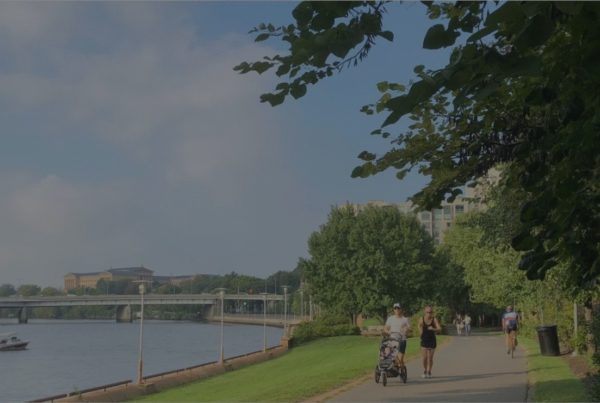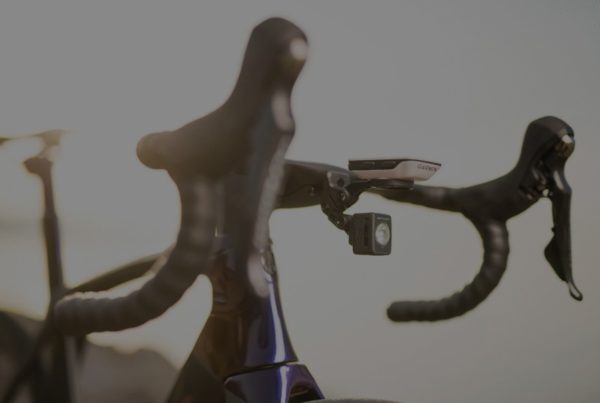Dear Readers,
A few weeks back, we had a letter from E.W. concerning a group ride that consistently gets caught in the intersection on a short-cycle traffic light (See “One single (group) ride or a collection of individuals?” ). The letters poured in, and they keep on coming, so this week, we’re going to run some more reader responses on the subject of group rides and red lights.
Bob
Bob,
In your reply to E.W. of Phoenix, you failed to mention one thing — more than likely there is a crosswalk that crosses the bike lane.
R. S.,
Mesa, Arizona
Hi Bob,
Just one caveat on running a red light at the T-intersection that’s actually pretty important: unless the T-intersection is posted stating that pedestrians are prohibited from crossing, the cyclists running the red light at the top of the T would be violating the crossing right-of-way of the pedestrian. I’ve been exploring that issue some here because we have a few intersections where this question has come up. Also, I’m not sure that posting the prohibition of pedestrians crossing is sufficient (if it’s actually justified from a safety or other perspective to prohibit the pedestrian from crossing). It may take putting up a pedestrian railing too blocking the crossing because persons with visual disabilities might not be able to see the sign prohibiting the crossing.
Advertisement
You’re absolutely right too regarding the potential collision of a driver swinging into the bike lane or paved shoulder when making the turn–I’ve pointed that out to some of the cyclists asking about this question in our area. Plus a driver could turn left and then immediately turn right into a driveway right in front of the cyclists going through the red light.
On the sidewalk riding question, there’s also a similar case in Arizona where a kid was hit riding his bike in a crosswalk. The court ruled that since there was no express prohibition in the statutes on riding a bike in a crosswalk, they considered that the kid was legal. That was the Maxwell v. Gossett case from the ’80s. The state hasn’t made any changes on the crosswalk riding question since that case. I’m not sure, however, that it was considered a precedent-setting case.
Thanks again for your great columns.
M. Z.
Hi Bob.
Just an FYI on the topic, and I know I am miles behind the time cut-off, but you might find this interesting. I am an Aussie living in Seattle and just returned from Melbourne enjoying four weeks of summer riding. Anyway, I just found out that a few months back a group I used to ride in killed a pedestrian by running a red light.
When I was younger I raced, but also got kicks by kicking it with a group of informal riders who called themselves the “Hell Riders.” Yep, it was called the Hell Ride. It was fast, it was furious. If you got dropped . . . tough. Speeds were crazy and the road as flat – and a lot on inexperienced riders learning the craft. It had trouble written all over it. The real problem was, the pack often swelled to well over 100 riders. Often the lights had been red for a long time before those at the back even got into an intersection.
The rider who killed the poor gentleman has, I believe, been charged with manslaughter (I would need to research it), and new road laws published about how large a group can be.
Regards,
A. R.
Thanks to my readers for pointing out that there may be crosswalks at these T-intersections. Of course, if pedestrians are present, they have the right of way, and as M.Z. pointed out, pedestrians with impaired sight may not be able to notice the peloton that just ran the red light and is bearing down on them.
In any event, whether the pedestrian has 20/20 vision, or is carrying a white cane, when the pedestrian is in the crosswalk, the pedestrian has the right of way. Just as we expect drivers to respect our right of way, and to be cognizant of our vulnerability on the road, so should we respect the right of way of pedestrians, and respect their vulnerability on the road.
And as A.R. mentioned, running pedestrians down has potentially fatal consequences. I had already heard about the incident involving the elderly gentleman who was run down in the Hell Ride, but hadn’t heard that legislation limiting group rides had been enacted as a result. This is a constant danger for cyclists, and one we need to be vigilant about—when the illegal behavior of some cyclists catches the attention of lawmakers, legislation affecting all cyclists is the likely result.
Hi Bob;
With regards to the answer to the question in your column, I think there is one more thing to consider when it comes to these “T” intersections where the cyclists are continuing along without turning. I believe if the lines that define the intersection area do not cross perpendicularly into the bike lane, cyclists are not required to stop at a red light. Some intersections like this exist here in Tucson.
E.,
Tucson, Arizona
Bob,
I read your response to the question about riding through a red light at a three way stop, staying to the right of the continuous white line on the straight-ahead lane (e.g., riding along the top of the “T” from right to left). I have often wondered if a cyclist (or pedestrian) is even on the road subject to the lights in that scenario. Strictly speaking, you are on the shoulder, not in the lane (assuming no formal bike lane), and there is no road or traffic to your right, so I think it is arguable that you are riding on the road subject to the lights. Your answer assumes this to be so without actually addressing it.
Thanks for your columns,
K. K.
Another interesting question from my readers. In Arizona, the vehicle laws regarding traffic signals “refer exclusively to the operation of vehicles on highways.” Well, we already know that a bicycle is not a vehicle in Arizona; nevertheless, “a person riding a bicycle on a roadway or on a shoulder adjoining a roadway is granted all of the rights and is subject to all of the duties applicable to the driver of a vehicle.” Did you notice that language that says the laws apply whether you’re operating a bicycle on the roadway or on the shoulder? That pretty much settles the question, but there’s more. The “highway” includes the shoulder, and thus the vehicle laws apply there. And finally, drivers of vehicles are required to obey traffic signals. Thus, although my readers are thinking like lawyers here (and K.K. actually is a lawyer!) in asking some necessary questions, it turns out that the Arizona legislature got there first: Whether on the shoulder, or on the roadway, you have to obey the traffic signals.
Bob,
The bottom line regarding a line of cyclists crossing an intersection is this: Cars are bigger than bikes, and they hurt when they hit you. So what if the cyclist has to chase to regain his spot in he pack? It’s a lot harder to do that if he’s dead.
T. B.
Allentown, Pennsylvania
That really is the bottom line. In any collision between you and the car, you will lose, whether you were obeying the law, or not. In that situation, the only thing worse than colliding with a car is having the insurance company blame you for your own injuries because you were riding in violation of the law. Hopefully, none of my readers will ever be involved in a collision with a car, but if one of my readers is unfortunate enough to experience that, the best thing you can do to protect your right to compensation for your injuries is to ride within the law.
That’s it for this week, the first column of the new year. On a final note, I’d like to thank all of my readers who have contacted me to request my appearance at their event on my upcoming speaking tour. I will be speaking extensively this year, and will make plans to appear before any club, bike shop, or other engagement that is interested in hosting me. If you would like me to appear to speak at your event or shop, or to your club or group, please drop me a line at bookbob2speak@gmail.com. I’m looking forward to meeting as many of my readers as possible. Look for announcements of my first 2008 speaking engagements in this column soon.
Bob
(Research and drafting provided by Rick Bernardi, J.D.)



